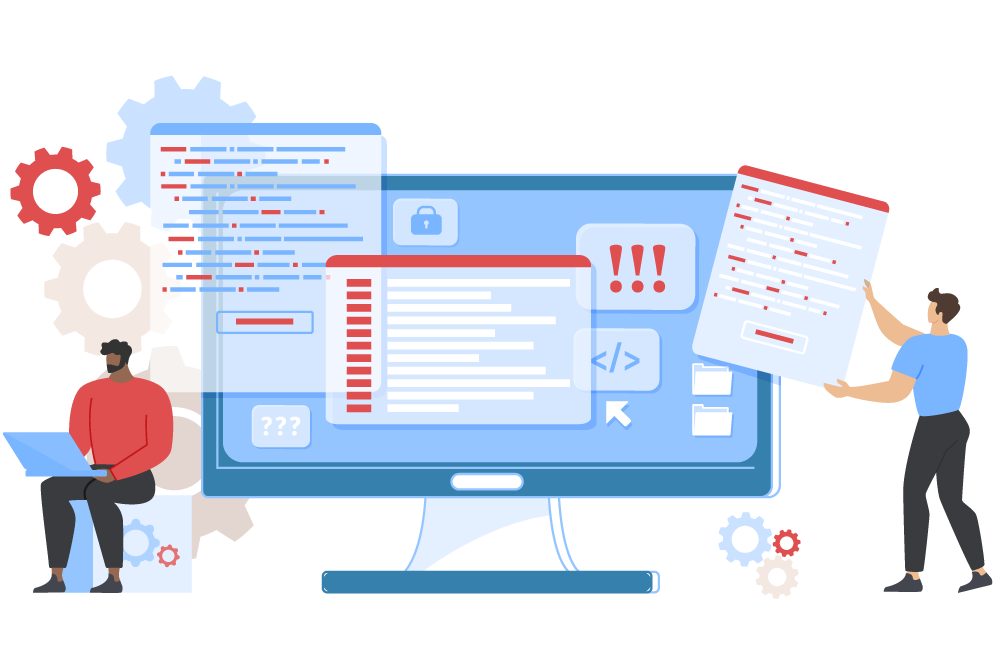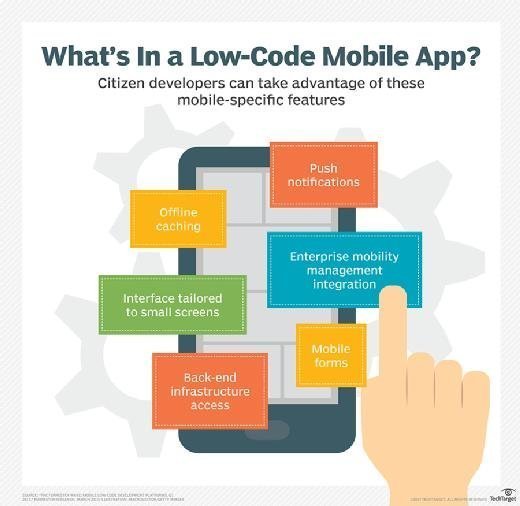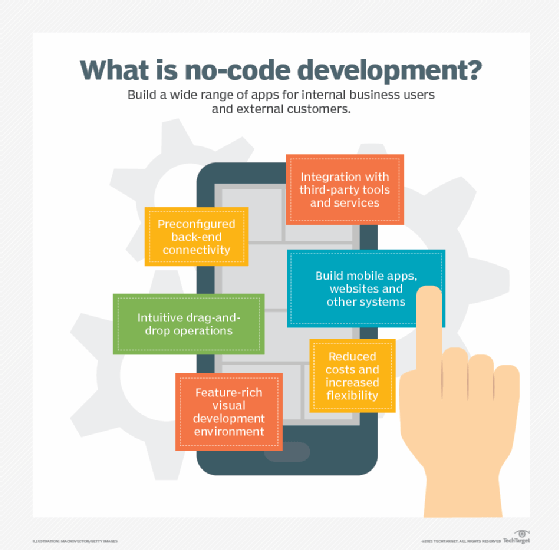New Ideas On Deciding On Low-Code Platform Info
Wiki Article
Advantages Of Low-Code Application Development In Terms Of Integration Capabilities
Low-code applications provide significant advantages in terms of integration, which is essential when creating applications that are able to seamlessly connect different systems and services. Here are a few major advantages: pre-built connectors and APIs.
Wide Selection of Connectors. Low-code software typically includes many built-in connections to enterprise systems that are popular (e.g. cloud-based services, databases and CRM). The process of integration is simplified.
API Integration: Many low-code platforms have integrated APIs that are built-in that let developers easily connect to external services and sources of data.
User-friendly:
Integration via Drag and Drop Integration tasks are typically done using drag and drop interfaces. Developers and non-developers are able to set up sophisticated integrated systems without writing code.
Visual Workflow Builders Visual Workflow Builders: These tools can be designed to create workflows, data flows, and integrations. They help with understanding and setting them up more efficiently.
Standardized Integration Methods:
SOAP and Restful Services: Using standard web service protocols such as SOAP and REST makes it easy to integrate external systems and applications.
OData Standards and Other Standards Support for standards, like OData permits easy access to data and its manipulation across various platforms and apps.
Real-Time Data Synchronization:
Low-code platforms permit real-time integrations between systems and applications. This allows information to be updated and consistent in all areas of the business.
Event-Driven Architecture: Some platforms support event-driven architectures, permitting applications to respond to events in real time, which is vital for interactive and dynamic apps.
Legacy System Integration:
Low-code platforms: These platforms could be utilized to connect legacy systems to new systems. They're an excellent option to upgrade your IT infrastructure without having to redesign everything.
Data Migration Tools Data Migration Tools aid in the transfer of data from older systems to new software built on low-code platforms.
Integration of Third-Party Services:
Integration with Cloud Services: Seamless integration with cloud services such as AWS, Azure, and Google Cloud allows for the easy deployment and scaling of applications.
Business Applications Low-code platforms allow you to be integrated with different business apps like Salesforce, SAP or Microsoft Dynamics. They allow a cohesive workflow for different business processes.
Simple Data Management:
Data models that are unifying: A few platforms provide low-code support unified data model to make data management easier across different systems.
Data Connectors: These pre-configured data connectors provide easy access and manipulation of data from various sources.
Security and Compliance
Secure Integrations: Low-code platforms guarantee that integrations adhere to security protocols and standard safeguarding data while in transit as well as at rest.
Compliance Features: These platforms usually include features to ensure that integrations meet the requirements of regulatory agencies (e.g. GDPR, HIPAA), providing assurance for companies dealing with sensitive data.
Extensibility:
Low-code platforms permit the addition of customized scripts and programs to accommodate more complex integration requirements. This flexibility is provided without compromising the ease of use.
Plug-in Ecosystems. An ecosystem of plug-ins and extensions will allow you to enhance your capabilities of integration, while adding additional functions as needed.
All in all low-code development platforms have powerful integration capabilities that make them a great device for developing interconnected and efficient applications. They simplify the process of linking disparate systems. They enhance data flow, and enable companies to make use of existing technologies while incorporating new ones, thereby ensuring an integrated and cohesive IT environment. Have a look at the best Low-code Platform for application development tips for more tips including rapid action development, build a docker container, paas service, no code platforms, paas service, low code platforms, rapid app development, develop web app, push notifications android, develop cross platform mobile app and more.

Scalability And Flexibility Are Two Advantages Of Low-Code Application Development
The creation of low-code applications has many advantages, specifically in terms of scaleability. It is essential to develop applications that expand with your company and can adapt as it changes. There are three benefits to low-code development.
Cloud-based Deployment : Many low-code platforms are cloud built. This lets applications expand seamlessly with cloud infrastructure. This allows businesses to manage the increasing demands without worry about the management of servers.
Auto-Scaling Features - Built-in auto scaling capabilities automatically alter resources in accordance with the demands. This provides consistent performance even in peak times without manual intervention.
Flexible Architecture:
Low-code platforms encourage modular design, allowing components to independently be developed, evaluated and scaled. Modularity provides greater flexibility and allows to modify or expand specific areas of the application without affecting other components.
Microservices Architecture: The Microservices architecture allows the creation of applications using a loosely coupled collection of services. This increases both capacity and flexibility.
Solutions that can be customized:
Extensibility: Low code platforms usually allow for customization of scripts and codes, which allows developers to expand the capabilities of apps beyond the ones that are available. This allows for unique business needs to be met with no limitations.
Third-Party Integrations: Integration with third-party APIs and services allows businesses to add additional functions to their applications.
Agile Development Deployment, Agile Development Agile Development:
Continuous Delivery & Deployment Low-code Platforms support agile methodologies by enabling continuous Integration and Continuous Delivery (CI/CD). This enables rapid deployment of updates and new features, allowing applications to grow quickly in response to customer feedback and changes to the market.
Iterative Development: This low-code model permits applications to be improved and scaled incrementally which reduces risk and allows for a more controlled expansion.
Resource Optimization
Effective Resource Management: Low-code platforms help optimize resource usage by providing tools to monitor and manage the performance of applications. This ensures resources are used efficiently and are scalable to meet the actual demands.
Load-balancing: Features that spread workloads equally among servers increase the ability of an application to handle large traffic and ensure consistent performance.
Global Reach
Multi-Region Implementation: Low-code platforms can be deployed across multiple geographical regions. This allows companies to offer users low latency internet access across the globe. This is particularly important when applications have an international user base.
Localization Support : Built-in language support enables applications to adapt to different local languages and requirements. This allows them to be more flexible on diverse markets.
Maintenance and updates:
Simple maintenance: The visual and module design of low-code software makes it easy to perform the maintenance tasks. They permit upgrades and bug fixes to be implemented rapidly without extensive downtime.
Version Control - Integrated versions control systems will help you manage updates, rollbacks and other changes. They can assure that the changes can be released in a safe manner and that previous versions can be restored when required.
Cost Efficiency:
Low-code platforms reduce development costs by reducing the need for complex programming. They can also allow you to expand applications without proportional cost or effort.
Pay-As-You Go Models: A lot of low-code services offer a variety of pricing models, including pay-as you-go that align costs with use and growth, offering the flexibility to finance.
In general, low-code development offers businesses the flexibility and scalability that they require to create robust and adaptable applications. These platforms enable rapid changes to meet changing demands and efficient utilization of resources and continuous enhancement. Applications can expand and evolve with the needs of the business. Read the top Enterprise application development with Low-code Platform for website recommendations including jdbc server, app modernization, rapid application design, mobile app development platforms, application modernization software, application development platforms, azure sql databases, stored sql procedures, application modernisation, database in azure and more.

Advantages Of Low-Code Application Development In Terms Of Limitations And The Possibility Of Customizing
Low-code development is an unbiased approach to dealing with the limitations of the system, while also providing for the possibility of personalization. These are the main benefits: Handling the limitations
Overcoming Complexity Barriers
Simplified development: Low code platforms streamline the process by offering templates and pre-built components. This helps speed up application deployment, even for complex ones.
Guided Workflows: A lot of platforms have guided workflows as well as wizards to help developers navigate through complicated processes, reducing the chance of making mistakes and making sure that the process is consistent.
Scalability Solutions
Built-In Scalability: Low-code platforms typically include features that allow the development of scalable architectures, which allows applications to take on more load without significant redevelopment.
Performance Monitoring: The instruments which monitor and optimize performance assist to ensure that the applications are effective regardless of the fact that they are growing.
Security and Compliance
Integrated Security Features : Low code platforms come with security measures built in including encryption and role-based access controls. They also conduct automated checks of compliance to address security concerns.
Platforms are regularly changing their security procedures and methods of compliance, which guarantee that applications are safe from emerging threats.
Customization Options:
Extensibility:
Low-code platforms let developers expand functionality beyond what is available by integrating customized code.
Developers can add extensions or modules to meet the specific requirements of business.
APIs and Integration:
API Support - The extensive support of APIs facilitates seamless integration with other systems and services, and allows for extensive customisation.
Third-Party Services : Low-code platforms often provides pre-built connections for well-known services offered by third parties, making integration and customization easy.
Flexible UI/UX Design:
Customizable User Interfaces: Designers are able to alter and design user interfaces that meet the requirements for branding and usability, creating a tailored user's experience.
Responsive Design: The built-in capabilities of responsive design guarantee that applications are able to be adapted to different screens and devices.
Business Logic Customization
Visual Workflow builders This tool lets developers build complex processes with minimal or no programming. They can create workflows and business logic using visual.
Platforms include conditional Logic that allows the creation of custom scripts that address certain scenarios or business rules.
Data Management
Custom Data Modelling: Developers create custom models that meet specific requirements for the particular application. They can tailor the handling of data to meet business requirements.
Advanced Data Processing : Integration with the latest tools and capabilities for data processing allows customizing how data is analysed, and utilized within your application.
Balanced Limitations and Customization
Frameworks and Standards
Best Practices Compliance Low-code platforms promote adhering to industry best practices and standards. This assists in maintaining high-quality flexible, and secure apps.
Governance Frameworks - Built-in governance structures make sure that any modifications do not affect security, integrity, or adherence.
Iterative Development:
Rapid prototyping: Through being in a position to quickly prototype and test their modifications developers can improve upon user feedback to improve the functionality of the application.
Continuous Improvement: Low-code systems support constant improvement, allowing constant customization and enhancements as business requirements evolve.
Empowering Users
Empowering Citizen developers: Low-code platform's intuitive interfaces let non-developers make customizations. This can increase the number of users who are able to enhance and modify applications.
Training and Support - Many platforms provide extensive training and support for users as they customize their applications, without compromising its stability or performance.
Overall, low code application development offers a solid system to overcome issues and offer a wealth of customization opportunities. This balance allows companies to create and maintain applications that function, are tailored to their particular requirements and adhere to high standards of quality, security, and scalability.
